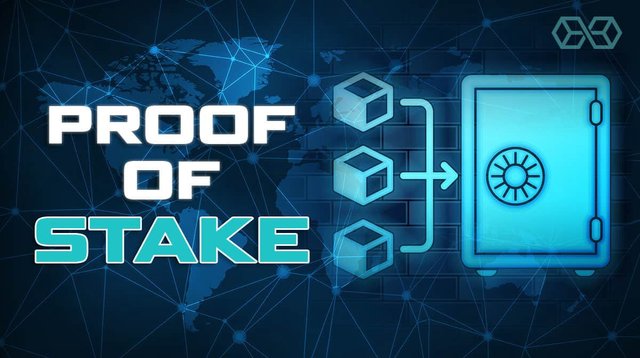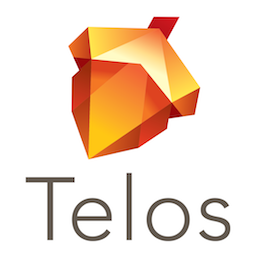Hello fellow steemians, it's been another wonderful week for me and a great pleasure to attend the lecture 6 of the fixed beginner's course organized by Professor @sapwood. All thanks goes to the Almighty Allah and also a big thanks goes to Professor @sapwood who took his time and make sure to digest this lecture to our understanding. This lecture was really helpful as I learned a lot from it. Below is the questions I have decided to answer from the questions given.
(2) What is the difference between PoS & DPoS? Advantages & Disadvantages? Name a few Blockchain projects which use the DPoS consensus mechanism and indicate the scaling capacity?

Below is my homework submission post.


Proof of Stake (PoS)
Proof of Stake(PoS) is a consensus algorithm which allows miners to mine cryptocurrencies and also validate transactions on the block based on the quantity and amount of cryptocurrency a miner is possessing. Proof of Stake was established as an option to Proof of Work(PoW). Proof of Work is the actual and original consensus algorithm which is used to verify transactions and also add fresh blocks to the chain in the blockchain technology.
With Proof of Stake, the possibility of cryptocurrency miners to strike and damage the network is seen as less risky. This is because it layouts repayments and compensations in a manner that makes an attack less beneficial for the cryptocurrency miner.
There is no demand for specialized nodes or hardware in the Proof of Stake consensus mechanism. Not only that, miners are eradicated from PoS mechanism and also, there is reduction in the initial high consumption of energy. In Proof of Stake consensus mechanism we can use our ordinary desktop computers and PC to serve. You do not need to use electricity and hardware to mine in PoS unlike PoW where miners use hardware and electricity.
The PoS system allows partakers to bet their currencies by staking them at a specific duration, and after staking the network will now choose the node or hardware which will verify the successive transaction or block randomly. The system selects the nodes according to the amount a participant bet, randomization and also the staking age. But one thing about this selection is that, the amount of coins a participant used in betting sometimes determine their livelihoods of being chosen as the validator of the successive transaction. If you stake high, there is a higher chance for you to be selected as the next validator and vice versa.
I want to give a brief description of the factors that is used to choose a validator in the Proof of Stake. Below are the 3 factors used to select a validator.
- Amount used to stake: In PoS, the more money you used in staking your higher chances of being selected as a validator and the smaller amount you stake, your lowest chances of being selected as the next validator.
- Randomization: In PoS mechanism, the system selects the next validator randomly using the highest amount of stake and the lowest hash value.
- Coin age: Validators are also selected in the PoS mechanism according to how long the users stake their tokens.
Advantages of Proof of Stake (PoS)
The Proof of Stake consensus algorithm has quite a number of advantages and some of them are enumerated below.
1). There is high security: Staked tokens on PoS can not be stolen by third parties or scammers. This is because, once the system detects any kind of activity which is fraudulent, the hardware or node will lose the amount tokens or coins used to stake. This makes it extremely difficult and impossible to steal users stakes.
2). Energy efficiency: In PoS, the energy consumed is lesser and more affordable because it does not require computer hardwares to mine the blocks. Even as compared to Proof of Work (PoW) which requires computer hardwares to mine, the energy consumed in PoS is less affordable.
3). Blocks are forged: In the Proof of Stake consensus algorithm, blocks re not mined but they are rather forged. This forging reduces the quantity of energy that will have been used in mining the blocks. There is a lot of energy consume in block mining as compared to block forging.
4). It stabilize the price of coins: Prices of coins are being stabilize in PoS because, new coins are not released as a reward to the validators of the next node. This even makes the PoS system to be more decentralized because there is no need mined new blocks using the mining pools.

The DPoS is also a consensus mechanism which was developed by a man called Daniel Larimer in the year 2014. Daniel Larimer is a software developer in America, he is also the founder of EOSIO software, Bitshares as well as Steemit. The DPoS consensus mechanism was developed and established based on democracy technology. It was developed to guard against the centralization of election process through the use of the blockchain technology.
DPoS was also developed as an option or substitute to both the Proof of Stake( PoS) and the Proof of Work (PoW) consensus mechanisms. This consensus mechanism was also developed to minimize and prevent using machines which has high computing powers and high quantity of energy consumption. Not only that, it was also developed to minimize the time taken for a transaction to be processed. The first DPoS which was established on the blockchain is the Bitshares.
I think it is important to let you know how this DPoS system works, so I will be explaining to you how the DPoS network works below.
In the DPoS network, miners are not responsible for creating and adding new blocks. New blocks are created and added by people we called Witnesses on the blockchain. This Witnesses are not mining but rather forging blocks so they are referred to as block forgers. An example of a blockchain where miners do not create and add new blocks is our very own Steemit blockchain. On steemit blockchain, there a total number of 21 witnesses and these witnesses are responsible for managing what happens on the blockchain. This Witnesses also validate and verify every transaction that is carried out on the steemit blockchain.
As I already stated, there are no miners in DPoS but rather witnesses and this witnesses are not just selected but they are elected through an election process. This people who are elected are not ordinary users on the blockchain but rather highly influential people who plays a big role on the blockchain.
On the DPoS consensus mechanism, we also have people who are called Delegates and this delegates are like the administrators of the blockchain. Delegates are also elected just like witnesses and they oversee and regulate the affairs of the blockchain. Delegates also propose relevant and key changes to made on the blockchain. Delegates are not responsible for creating and adding new blocks because they are different from witnesses. Delegates play a quite number of times of the blockchain such as the determination of witnesses pay, block sizes, block intervals and transaction fees or charges on the blockchain.
As stated above, witnesses and delegates are not selected but they are rather elected which makes them to put in a lot of hard work to improve the blockchain quality because they do not want to lose their position to someone else. There is usually a high level of competition in the election of witnesses and delegates so it makes them not to abuse the position because they can be voted out in the next election.
Every user on the blockchain has the power to participate in the election of witnesses. This gives equal opportunity to users on the blockchain and avoids discrimination. This approach makes the DPoS consensus mechanism as one of the most democratic method to consensus mechanism on the block chain.
- Users are given equal the same and equal opportunity to participate in the election of witnesses and delegates.
- Transaction charges and fees are low in DPoS. Transaction fees does not exist in some cases.
- This consensus mechanism is quicker and faster than PoS and PoW mechanisms.
- Incompetent and lazy witnesses can be voted out in subsequent elections.
- Users are given the freedom to elect witnesses who are best suitable for the position.
- Energy consumed in DPoS is less which helps to efficiently manage the available energy.
- Hardwares or nodes with high computation power is not required or needed in DPoS mechanism.
- In some cases, the vote turnout is low because there are some users who do not know how to vote for witnesses and delegates and there are some users who are ignorant about the whole process. This makes the vote turnout to be low in some cases.
- This mechanism is most suitable and works efficiently for social media platforms or networks than financial systems. The reason is that, DPoS is semi-decentralized but not fully decentralized.
- There are a limited number witnesses who are usually elected on the blockchain. Let's take the steemit blockchain for instance, we have a total number of 21 witnesses who are elected to create new blocks and validate new transactions.
- Another disadvantage is that, this system sometimes looks like a centralized system because of the presence of the delegates, representatives and witnesses on the blockchain. Whales are very influential and usually have more control in the blockchain, because of that they sometimes tend to vote their friends as delegates and witnesses.
- For effective management and governance of the blockchain, almost all members and users need to active on the network. Inactiveness of most users makes the governing and management of the network to be tedious for the witnesses and delegates.


The table below layout the differences between PoS and DPoS.
| PoS | DPoS |
|---|---|
| This consensus mechanism is decentralized. | This consensus mechanism is semi-decentralized. |
| Scalability is less | Scalability is more when compared to PoS. |
| Creators of blocks are selected or chosen. | Creators and validators of blocks are voted through election process. |
| Absence of block reward, miners are rather awarded with reserves from the transaction charges. | Staking rewards are used to pay validators and creators of blocks. |
| We pay transaction fees in PoS. | We do not pay transaction fees in DPoS. |
| The network is suitable for financial or monetary uses cases. | The network is suitable for social social use. |
| In this consensus, validators are chosen based on users with the highest stakes and lesser hash value. | Users are given the same opportunity to stand for an election to be selected as a witness or delegate. |


There a number of blockchain projects that use the DPoS consensus mechanism. All this projects have their individual scaling capacity. But one may ask what scaling capacity is.
Scalability basically refers to the potential of a blockchain to boosts and enhance its power to process additional transactions per second.
Now that we know what scalability is, let's now look at the blockchain projects which use the DPoS consensus mechanism with their respective scaling capacities.
Bitshares
The Bitshares blockchain project has the ability to process about 100,000 transactions per second(TPS).
EOS
The EOS blockchain project has the ability to process about 10,000 transactions per second (TPS).
Steem
This is one of the best blockchain project with a higher scaling capacity. This project has a scalability which is more than both Ethereum and Bitcoin projects. The steem project has the ability to process 1,169,182 transactions per second (TPS).
TRON
The Tron blockchain project has the ability to process over 1,000 transactions per second (TPS).
Telos
The Telos blockchain project has the ability to process about 10,000 transactions per second (TPS).
Worbli
The Worbli blockchain project has the ability to process about 4,000 transactions per second (TPS).
WAX
The WAX project has the ability to produce blocks in every 0.5 seconds.
Nano
The Nano project has the ability to process over 1,000 transactions per second (TPS).
LISK
The LISK project has the ability to produce 1 block per second.


Consensus mechanism has a lot of advantages and importance to the blockchain as it strengthens it's security and also bring a lot of trust among users on the blockchain. Proof of Stake(PoS), Proof of Work (PoW) and Delegated Proof of Stake(DPoS) consensus mechanisms are all important to the blockchain project as they all have their specific role they play.
Thank you.
Cc: @dilchamo









.jpeg)

